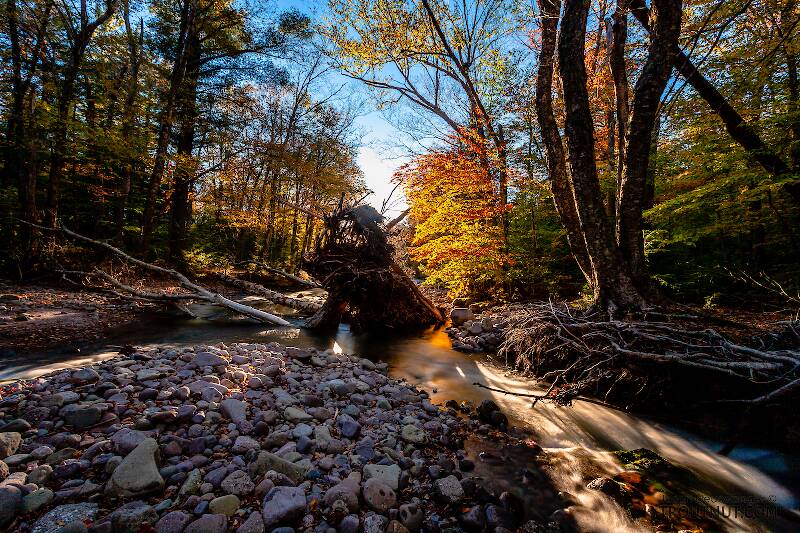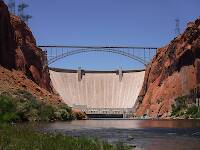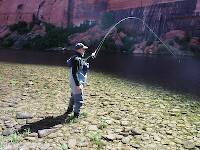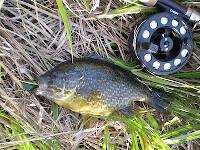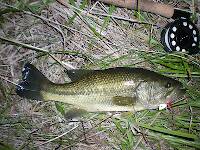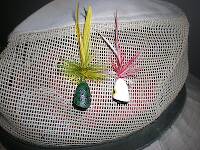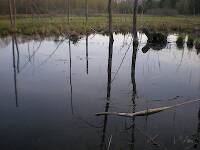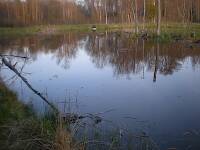
Blue-winged Olives
Baetis
Tiny Baetis mayflies are perhaps the most commonly encountered and imitated by anglers on all American trout streams due to their great abundance, widespread distribution, and trout-friendly emergence habits.
Featured on the forum

This is the first of it's family I've seen, collected from a tiny, fishless stream in the Cascades. The three species of this genus all live in the Northwest and are predators that primarily eat stonefly nymphs Merritt R.W., Cummins, K.W., and Berg, M.B. (2019).

Troutnut is a project started in 2003 by salmonid ecologist Jason "Troutnut" Neuswanger to help anglers and
fly tyers unabashedly embrace the entomological side of the sport. Learn more about Troutnut or
support the project for an enhanced experience here.
By Troutnut on January 24th, 2017, 8:33 am EST
I would love nothing more than to be able to keep this website apolitical and stick to fishing.
Unfortunately, a sizable minority of our population voted for Donald Trump, and now those of us who care about the environment are in for the fight of our lives. All of us with a platform to reach the public now have an obligation to call attention to what he's doing and why it's wrong.
The Pebble Mine
One key battle concerns the proposed Pebble Mine in Bristol Bay, Alaska. If built, it would be the world's largest open-pit gold and copper mine. I do not categorically oppose all mining, because we need materials to build things, and there are many places to extract minerals without major long-term risks to the environment. However, the Pebble Mine might be in the single worst location on the entire planet for this type of mine. Even the late Republican Senator Ted Stevens, an ardent supporter of resource development if ever there was one, called Pebble, "the wrong mine in the wrong place."
As an ore mine that would use chemical leaching processes to extract minerals, the Pebble Mine would store a massive reservoir of toxic chemicals behind the world's largest earthen tailings dam in a very seismically active area. Worse yet, it straddles the headwaters of two of the major river systems (the Kvichak and Nushagak) feeding into Bristol Bay. Bristol Bay supports the largest sockeye salmon fishery in the world and an estimated $1.5 billion in annual economic activity. Of all salmon species, sockeye are especially susceptible to a major spill because so much of their reproduction depends on lakes rather than small tributaries, meaning a spill in any tributary that flows into the lake could be devastating. Leaks from the mine into the Kvichak system would flow into Lake Iliamna, the largest lake in Alaska and a major sockeye producer.
For more details on the Pebble Mine, see the efforts to stop it by Trout Unlimited, the Natural Resources Defense Council. It's also opposed by the locals, the Bristol Bay Native Corporation. Conservationists were hopeful that this long battle had been won when the Anglo American and Rio Tinto mining companies walked away from the project.
Just about the only ones who want this mine built are Northern Dynasty Minerals, the Canadian mining company that owns the mineral rights, and now Donald Trump. The CEO of Northern Dynasty said today that the Trump administration has a desire to permit the mine and they're looking for a new partner to develop it. In short, Trump is trying to fast-track a project that would endanger a priceless treasure of the natural world, and thousands of American jobs that depend on it, solely to create profits for a foreign corporation.
The Clean Water Rule
Trump is also targeting the Clean Water Rule, a set of EPA guidelines clarifying how existing law applies to water bodies such as small streams. You can view a series of fact sheets about the Clean Water Rule on the EPA website right now. (I've downloaded them all to mirror in case they get scrubbed from the site.) As a fish ecologist I can vouch for the rich scientific literature documenting the importance of headwater streams to the water quality and productivity of downstream rivers. They need protection for that reason, but they're also treasured in their own right by small-stream anglers everywhere. This one could directly affect the streams you fish. The rule also protects wetlands critical to fish and wildlife.
Just as importantly, the rule exists to close a loophole being used by developers in response to the Clean Water Act legislation. The Clean Water Act prohibited dumping toxic waste directly into major rivers, so polluters started dumping it into smaller water bodies that drain into those clearly protected rivers. The Clean Water Rule closes this loophole.
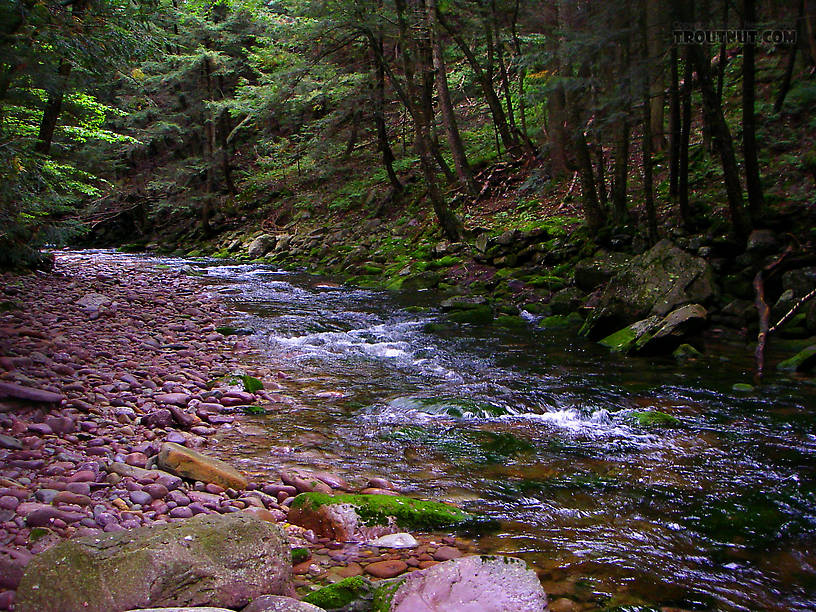
Small streams. I like them. Preferably without toxic waste.
The Trump administration is committed to eliminating the rule. From their new website:
They made that $30 billion number up -- it's one of those "alternative facts." An analysis by actual scientists and economists found that the rule has a positive economic impact. The protected waters contribute value to the tourism industry, and the act of protecting them creates jobs because companies have to spend money (and hire people) to do right by the environment. So the rule is good for everyone in the economy except the people at the very top who want to increase their profits by cutting environmental corners and paying fewer employees.
For more details, see coverage by Hatch Magazine.
More to come
I'm sure this is just the beginning. I will continue to speak out as much as I can when it's necessary, and I'm afraid it's going to be necessary a lot.
Unfortunately, a sizable minority of our population voted for Donald Trump, and now those of us who care about the environment are in for the fight of our lives. All of us with a platform to reach the public now have an obligation to call attention to what he's doing and why it's wrong.
The Pebble Mine
One key battle concerns the proposed Pebble Mine in Bristol Bay, Alaska. If built, it would be the world's largest open-pit gold and copper mine. I do not categorically oppose all mining, because we need materials to build things, and there are many places to extract minerals without major long-term risks to the environment. However, the Pebble Mine might be in the single worst location on the entire planet for this type of mine. Even the late Republican Senator Ted Stevens, an ardent supporter of resource development if ever there was one, called Pebble, "the wrong mine in the wrong place."
As an ore mine that would use chemical leaching processes to extract minerals, the Pebble Mine would store a massive reservoir of toxic chemicals behind the world's largest earthen tailings dam in a very seismically active area. Worse yet, it straddles the headwaters of two of the major river systems (the Kvichak and Nushagak) feeding into Bristol Bay. Bristol Bay supports the largest sockeye salmon fishery in the world and an estimated $1.5 billion in annual economic activity. Of all salmon species, sockeye are especially susceptible to a major spill because so much of their reproduction depends on lakes rather than small tributaries, meaning a spill in any tributary that flows into the lake could be devastating. Leaks from the mine into the Kvichak system would flow into Lake Iliamna, the largest lake in Alaska and a major sockeye producer.
For more details on the Pebble Mine, see the efforts to stop it by Trout Unlimited, the Natural Resources Defense Council. It's also opposed by the locals, the Bristol Bay Native Corporation. Conservationists were hopeful that this long battle had been won when the Anglo American and Rio Tinto mining companies walked away from the project.
Just about the only ones who want this mine built are Northern Dynasty Minerals, the Canadian mining company that owns the mineral rights, and now Donald Trump. The CEO of Northern Dynasty said today that the Trump administration has a desire to permit the mine and they're looking for a new partner to develop it. In short, Trump is trying to fast-track a project that would endanger a priceless treasure of the natural world, and thousands of American jobs that depend on it, solely to create profits for a foreign corporation.
The Clean Water Rule
Trump is also targeting the Clean Water Rule, a set of EPA guidelines clarifying how existing law applies to water bodies such as small streams. You can view a series of fact sheets about the Clean Water Rule on the EPA website right now. (I've downloaded them all to mirror in case they get scrubbed from the site.) As a fish ecologist I can vouch for the rich scientific literature documenting the importance of headwater streams to the water quality and productivity of downstream rivers. They need protection for that reason, but they're also treasured in their own right by small-stream anglers everywhere. This one could directly affect the streams you fish. The rule also protects wetlands critical to fish and wildlife.
Just as importantly, the rule exists to close a loophole being used by developers in response to the Clean Water Act legislation. The Clean Water Act prohibited dumping toxic waste directly into major rivers, so polluters started dumping it into smaller water bodies that drain into those clearly protected rivers. The Clean Water Rule closes this loophole.

Small streams. I like them. Preferably without toxic waste.
The Trump administration is committed to eliminating the rule. From their new website:
For too long, we’ve been held back by burdensome regulations on our energy industry. President Trump is committed to eliminating harmful and unnecessary policies such as the Climate Action Plan and the Waters of the U.S. rule. Lifting these restrictions will greatly help American workers, increasing wages by more than $30 billion over the next 7 years.
They made that $30 billion number up -- it's one of those "alternative facts." An analysis by actual scientists and economists found that the rule has a positive economic impact. The protected waters contribute value to the tourism industry, and the act of protecting them creates jobs because companies have to spend money (and hire people) to do right by the environment. So the rule is good for everyone in the economy except the people at the very top who want to increase their profits by cutting environmental corners and paying fewer employees.
For more details, see coverage by Hatch Magazine.
More to come
I'm sure this is just the beginning. I will continue to speak out as much as I can when it's necessary, and I'm afraid it's going to be necessary a lot.
Martinlf on Mar 30, 2018March 30th, 2018, 1:11 pm EDT
I would LOVE to catch a pike on a fly, one of my goals this year
My experience with pike was in Canada, and different waters and different times of the year probably require different approaches, but I used minnow flies tied with Puglisi synthetic fibers. They were easier to cast than some rabbit fur strip flies a friend had recommended. I let them sink and began to twitch them subtly, and wham, the pike slammed them. No fast retrieve needed for those fish. Just a crippled looking white and red fly. It was a blast. I'll see if I can bump up the thread. Nothing huge, but one day the action was almost nonstop.
"He spread them a yard and a half. 'And every one that got away is this big.'"
--Fred Chappell
--Fred Chappell
Quick Reply
Related Discussions
Topic
Replies
Last Reply
4
Aug 16, 2007
by Wbranch
by Wbranch
3
May 22, 2011
by Jmd123
by Jmd123
1
Oct 24, 2011
by Agtabrentwi
by Agtabrentwi

